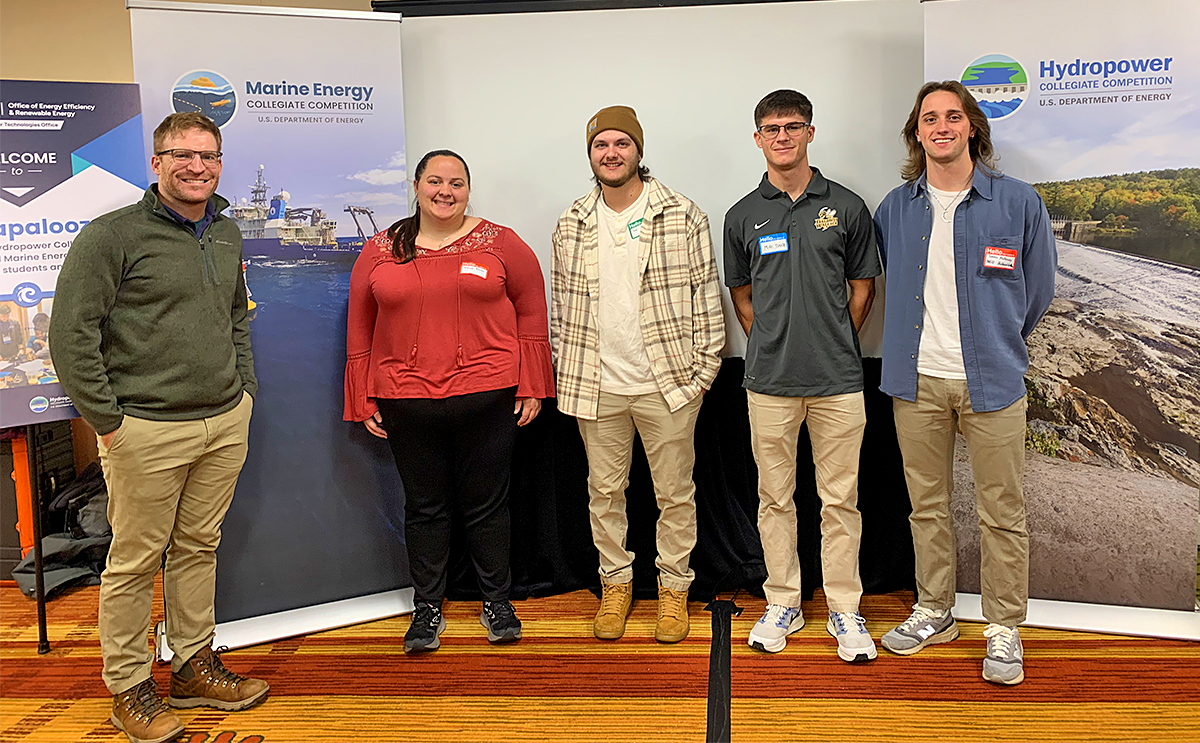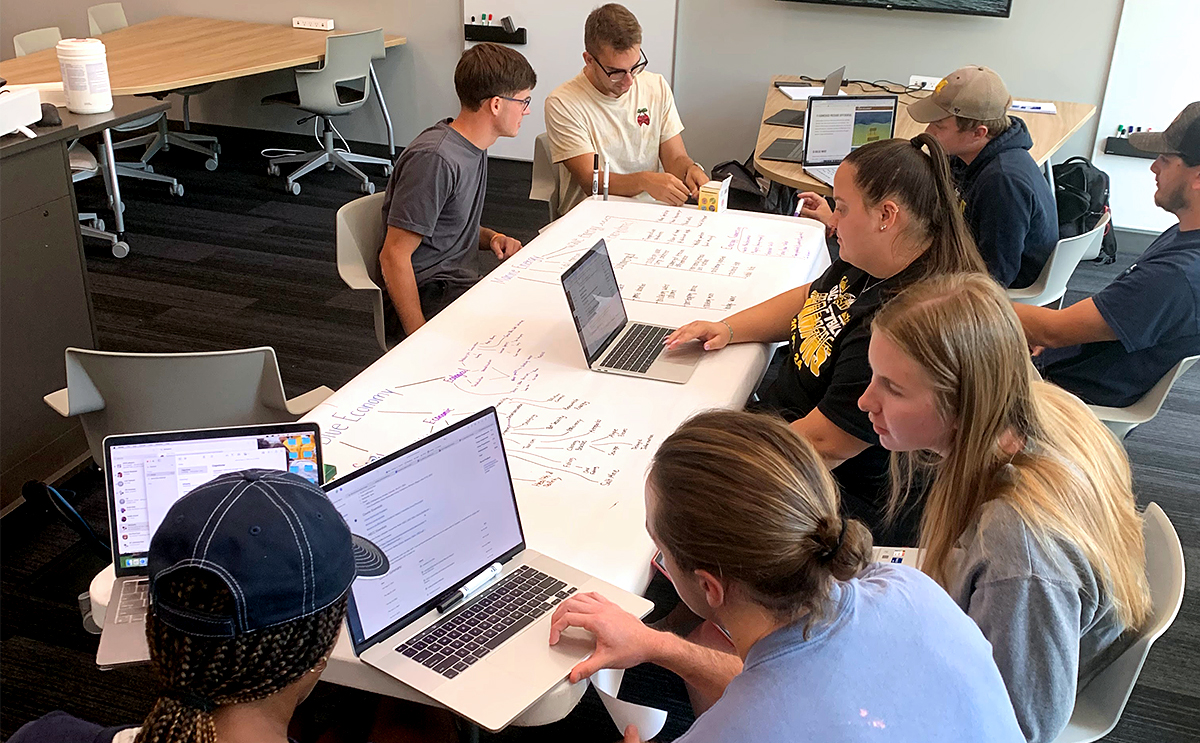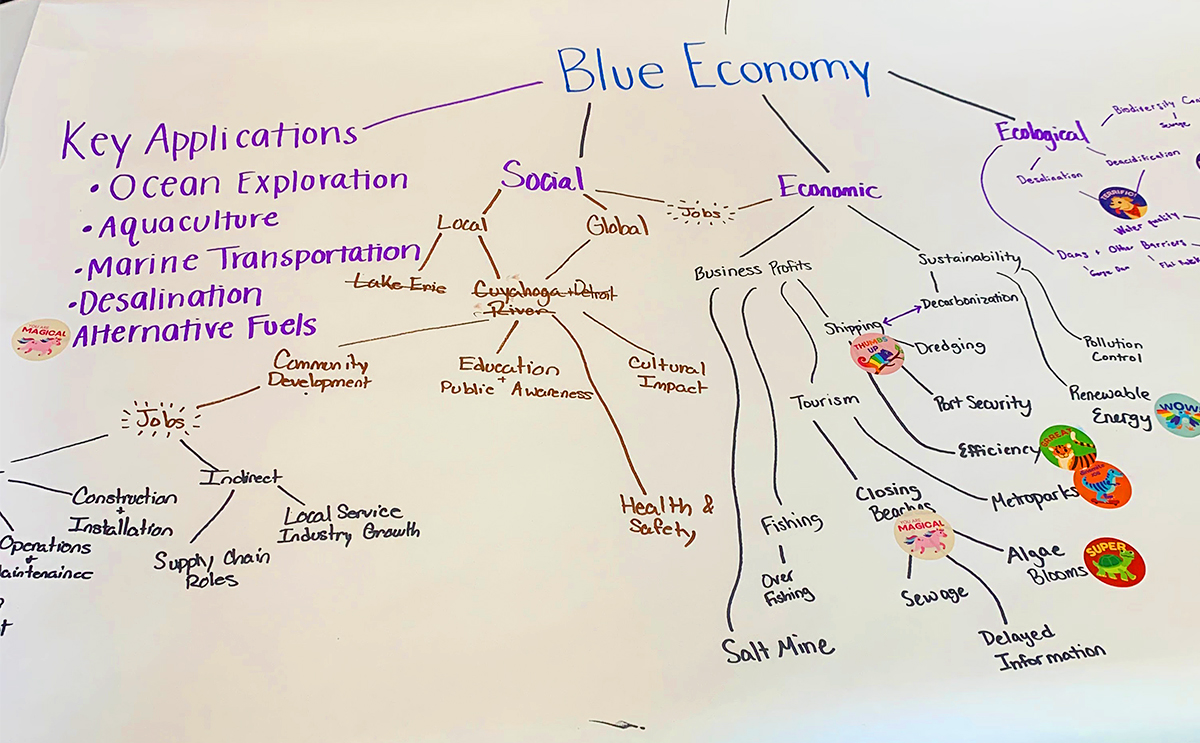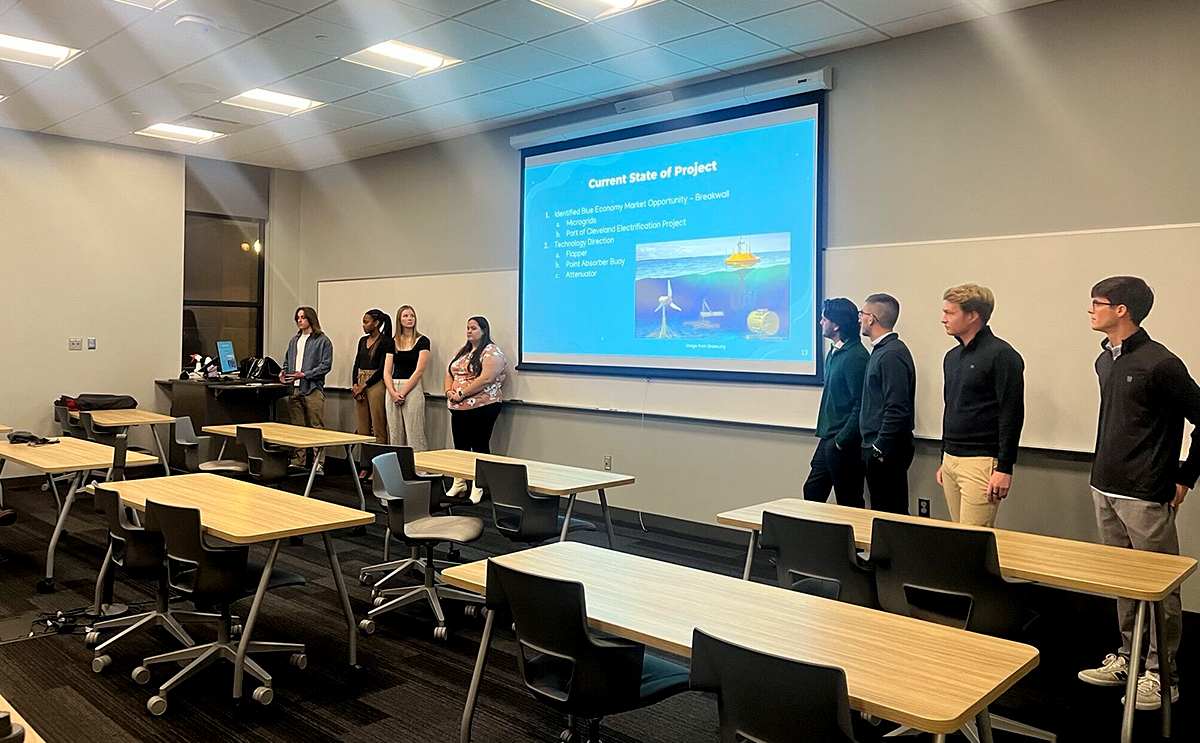BW is leveraging the diverse and abundant energy opportunities of Lake Erie as part of a prestigious grant by the U.S. Department of Energy's Water Power Technologies Office (WPTO) that puts Baldwin Wallace on a national platform alongside R1 and R2 research universities.

The WPTO announced in December that BW was selected for a $499,796 grant. BW was one of 17 universities nationwide selected to receive the research and development funding, which is aimed at both addressing the challenges facing marine and ocean renewable energy industries as well as spurring innovation and development.
Marine energy is power that can be harnessed from waves, tides, ocean and river currents as well as potential differences in ocean salt levels, temperatures and pressure. Similar to wind energy and solar power, marine energy is renewable and abundant.
Dr. Jeff Dusek, associate professor of engineering at BW, is the principal investigator and writer of the DOE grant application. His interest and expertise in marine energy meld both a childhood spent at the shores of Lake Erie and lauded skills as a sailing coach with a bachelor of science degree in ocean engineering from Florida Atlantic University and a master's in ocean engineering and a Ph.D. in mechanical and ocean engineering from MIT.
"We are honored to be selected for this grant on behalf of BW and the tremendous opportunities it offers to our students, but there is also a greater reach and benefit that extends to Northeast Ohio through our partnership with Cleveland Water Alliance, NETSCo, Freeboard Technology and Argonaut," said Dusek.
"Lake Erie has great potential in the areas of marine energy and the Great Lakes freshwater Blue Economy. This grant affirms that belief on a national level and showcases Baldwin Wallace as an active contributor in helping to bring these important visions to fruition," he added.
The grant project is titled "Unique Opportunities, Local Solutions: User-Centered Design of Marine Energy for Lake Erie." It unites BW students with students from Davis Aerospace & Maritime High School (which is part of the Cleveland Metropolitan School District) to design and test marine energy technologies with real-world applications for Lake Erie.
BW student involvement will span three areas — a marine energy course taught through the engineering major, a year-long capstone program for engineering students and summer research experiences.

The WTPO grant is the second prestigious honor received by BW and Dusek this year. In the summer, BW was accepted to the 2025 Marine Energy Collegiate Competition (MECC) sponsored by the WPTO and administered by the National Renewable Energy Laboratory. The multi-level, nine-month-long competition focuses on collegiate teams exploring marine energy. The guidelines of the competition require teams to produce a device that's powered by at least 51% marine energy that is applicable to a Blue Economy application.
The 2025 national competition is comprised of 36 teams, including several from renowned R1 and R2 universities across the U.S., which were selected to participate through a competitive application process.
Dusek, along with co-leader and assistant professor of engineering Dr. Jonathon Fagert, is engaging BW students in the engineering capstone course in the competition.

Dusek's interest and research include the Blue Economy and marine energy, both of which offer great potential for Northeast Ohio. Students in his capstone course are studying the topics as part of the MECC.
Among the students is engineering major Caely Ressler '25 of Napoleon, Ohio, who is a team captain. She believes the project offers outstanding real-world and hands-on learning.
"Being so close to Lake Erie, there is ample opportunity for a relevant marine energy solution to be produced by BW and applied to our local community," explained Ressler.
"This competition provides us with a unique framework to grow professionally within the Greater Cleveland community by gaining an understanding of the local climate surrounding marine energy, as well as making local connections and fostering the collaboration that is necessary to succeed in a project and competition such as this," she went on to say.
"The project will force us to reason through new topics and information while using our technical skills to problem solve, which are processes that will be used by every member of the capstone group in the future," she added.
Dusek agrees. He believes BW students benefit not only from an engineering learning perspective but also by becoming involved in emerging technologies.
"As the City of Cleveland and Cuyahoga County re-imagine how the public interacts with Lake Erie, there is a tremendous opportunity to include the Blue Economy in the conversation. A key component of BW's participation in this competition is that areas for the Blue Economy will emerge from engagement with local stakeholders," stated Dusek.
"The BW MECC team has benefited greatly from stakeholder interviews with partners, including Cleveland Water Alliance, NETSCo, Great Lakes Data Watershed and our MECC industry mentor, Aisha McKee," noted Dusek.
"The team is pursuing the concept of deploying wave energy devices on the Cleveland Breakwater to feed renewable energy into a downtown microgrid. The effort builds on the unique opportunities in Cleveland presented by the creation of the Cuyahoga Green Energy microgrid utility and draws inspiration from the Port of Cleveland's electrification efforts," he added.

Both the WPTO grant and MECC honor reflect the scope of BW prestige and STEM connections across the region and nationally. Collaboration is a key part of BW's success, whether it includes faculty-student research and projects or extends to professional partnerships across diverse industries.
Currently, 70 students are majoring in engineering at BW. Students praise the University's degree program in engineering for its broad-based study that combines the rigor of science, mathematics and computing with the communication and creative problem-solving skills of a liberal arts-focused education.
"I chose BW as my college for engineering because it is unique in offering a general engineering program. When I graduate, I will have a wider range of job opportunities because I am not limited to a single engineering discipline," said Ressler.
The engineering major is also part of BW's STEM Scholars Program and Choose Ohio First Scholarship.